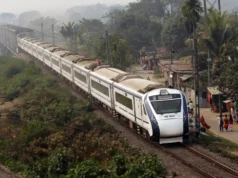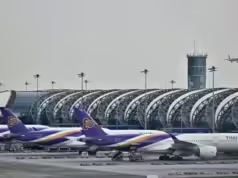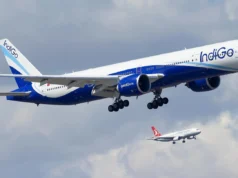For Air India, these are incredibly difficult and uncertain times. The struggling airline has yet to fully recover from the Flight AI171 tragedy, and new issues keep jeopardizing its safety record.
On July 22, a fire broke out in the auxiliary power unit (APU) in the tail section of Air India Flight AI315, which had arrived from Hong Kong, as passengers were getting off the aircraft at the Delhi airport. The aircraft was grounded, and aviation authorities were notified of the situation.
The aircraft had sustained some damage. The crew and passengers, however, disembarked safely and without incident. In a statement, Air India stated, “The aircraft has been grounded for additional investigations and the regulator has been duly notified.”
That’s only the most recent stain on an airline owned by the Tatas, one of the most reputable companies in the nation, which is quickly developing a dubious reputation. It all began with the horrific June 12 accident of Flight AI171, a Boeing 787 Dreamliner headed for London, just after takeoff from Ahmedabad. 260 lives were lost.
Although no decision has been made yet, investigators from the US National Transportation Safety Board and India’s Air Accidents inquiry Bureau are trying to figure out what went wrong. The first inquiry report made reference to engine issues and crew misunderstanding in the cockpit.
However, for an airline that is frantically attempting to change its image, it definitely doesn’t get much worse than this. Controversy reverberated in Parliament, where the monsoon session had just started, as anticipated. Kinjarapu Rammohan Naidu, the minister of civil aviation, promised Rajya Sabha members that the probe was open and continuing.
Concerns expressed by the preliminary investigative report regarding the possibility that the fuel-control switches were inadvertently flipped, turning off the plane’s engines, were addressed by Naidu. Due to opposition sloganeering, the Lok Sabha’s proceedings were momentarily interrupted.
Further talks took place in the Rajya Sabha as the administration stressed that there were no plans to turn over the crash investigation to the Central Bureau of Investigation (CBI), despite rumors in foreign media. Given that Air India had received nine safety notices prior to the tragedy, the civil aviation ministry was subjected to difficult questions regarding any monitoring that may have been provided by the Directorate General of Civil Aviation (DGCA).
In five instances of safety violations during the previous six months, the DGCA has issued nine showcause notes against Air India. Only one is currently in force; the other is being weighed.
Additionally, an Air India A320, an Airbus single-aisle narrow-body aircraft, had skidded off the Mumbai runway in heavy rain the day before the APU fire on Flight AI315. Before coming to a stop on a nearby taxiway, the plane drifted 16–17 meters off the main runway and reached an unpaved area. The plane stopped and dropped off into the grass. The engine cowling was destroyed, and three tires detonated. There were no injuries. For inspection, the aircraft was taken out of service.
Air India reported that it had conducted a voluntary inspection of the fuel control switch (FCS) locking device and a “safety general review” of its fleet of B787 and B737 aircraft, and that no problems had been discovered with the locking gears. This was in response to the recent DGCA directive to all airlines to have the fuel-control switches of their Boeing aircraft inspected by July 21.
Since the preliminary inquiry into Flight AI171 revealed that the switch might have been inadvertently turned off during takeoff, potentially resulting in fuel starvation, the fuel switch has come under intense scrutiny. Pilots attempted, but failed, to restore electricity.
In an effort to promote transparency and dispel any suspicions about the pilots of Flight AI171, Indian pilots’ associations have called for the release of the full audio recording of the cockpit voice recorder in the doomed aircraft.
Due to the APU fire and runway skidding incidents, Air India’s safety concerns have recently reached a low point. The symbolism of a jet catching fire while people are getting off and a runway mishap amid the aftermath of a deadly disaster is hard to overlook. Building safety, efficiency, and trust may require much more than a fleet of new aircraft or a coat of new paint for the struggling airline.







